Critique on critiques
Contemporary literary criticism in Sri Lanka:
by Ranga Chandrarathne
|
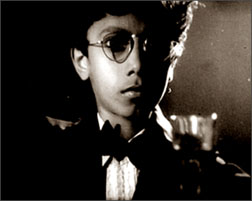
Thunveni Yamaya which changed the course of contemporary
artistic cinema.
|
It is unarguable that the prime task of a literary critique or a
criticism is to explore a work of art whether it is a drama, painting,
concert, fiction or a film, in a critical manner, examining and
dissecting many aspects of the work of art at hand.
Apart from commenting on the merits and the de-merits of a work of
art, a critic should also look into the aspect of its contemporary
nature, universality in application and above all the purpose of the
work of art and the specific linguistic or literary devices that the
artist employed in achieving his/her objectives in an innovative manner
within the constrains of that particular media and how he/she achieves
them.
Primarily, in order to make an objective analysis, a critic should,
at least, posses a fair all round knowledge of all most all forms of art
and the new developments in this arena and latest trends in each medium
of art such as film, drama, paintings. He or she should also posses
knowledge of technical developments in his or her specific area of
concern.
|

Kaushaya Fernando in Boradiya Pokuna-( Scent of the Lotus pond)
Glisten amidst attacks by those who are willfully ignorant of
symbolism |
Formal literary criticism in Sri Lanka began to take shape at the
tail end of the 1960's with the widespread reforms and renaissance in
education sector. As an independent nation, Sri Lanka introduced
universal education in the mother tongue of its diverse races and
communities.
While section of the high class Tamils, Muslims and Burghers
continued to educate their children in the English medium which was
invariably their mother tongue, the vast majority of Sinhalese, Tamils
and Muslims switched on their medium of instruction either to Sinhala or
to Tamil.
For the first time, literary criticism was incorporated into school
and university syllabi and was taught at school and university levels.
News paper both in vernaculars and English began to carry literary
reviews and analysis and as most of the critics of the day were products
of universities and well-read men and women, various criticisms on fine
arts which appeared in daily and weekly newspapers were of a higher
standard.
One of the significant aspects of early criticisms was that they were
not only in-depth and comprehensive reviews that enlightened the public
on fine arts but also helped the public to understand and appreciate a
work of art, whether they were films, dramas or fiction.
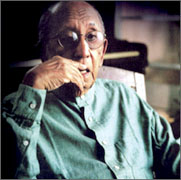 |
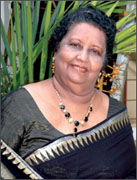 |
 |
| Lester James
Peries |
Sumitra Peries |
Dharmasiri
Bandaranayeke, |
|
guiding the nation on originality and genuinity in Art. |
From the very inception, literary critics who extensively wrote on
art and culture can be categorized into two groups; those who did
in-depth and comprehensive criticisms and those who made analysis at a
superficial level from diverse perspectives.
Reggie Siriwardene, Philip Cooray, Benedict Dodampegama belonged to
the former category and the salient aspect of their critiques was that
they were of higher standards in terms of diction as well as language
and idiom.
However, Jayawilala Wilegoda who carried a regular column on cinema
in 'Dina Mina' were not that comprehensive and of the standard as those
of Reggie Siriwardene who wrote to Sunday Observer and Daily News.
(There were other dominant names such as A. J. Gunawardene and Ajith
Samaranayake, literary critics of universal fame).
Piyasiri Nagahawatte and Piyal Somaratne were leading critics in
Sinhala on cinema and prepared the Sinhalese audience which invariably
helped Sinhala film makers as the audience was aware of the work before
hand.
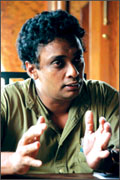 |
 |
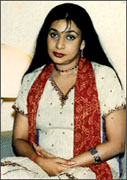 |
|
Prassanna Vithanage-analyses social issues from a realistic
perspective |
Saumya Liyanage- guiding the nation towards understanding
complexities in the medium of cinema. |
Enokaa Satyangani Keerthinanda-harrasments, a blessing in disguise |
This public awareness was raised through daily newspapers. Especially
the drama review by D.C. Ranatunga on 'Dina Mina' and reviews by Nihal
Ratnaike on 'Daily News' were very popular columns on drama and theatre.
They were also of higher standard. Other notable critic of that era was
Minister Dr. Sarath Amunugama who continuously wrote diverse criticism
on allmost every drama and film.
Apart from newspapers, radio, in the absence of television, made a
substantial contribution to literary criticism, especially, by its
programme 'Shatriya Sangrahaya' which was dedicated for reviews on drama
and films. Prof. Sucharitha Gamlath and Prof. Sunanda Mahendra de Mel
often participated in the programme.
Although the number of newspaper, publications, and TV and radio
channels increased over the last decades, quality of the criticism
carried out in various news papers steadily declined, some of the
newspapers publishing haphazard and partisan criticism by a section of
public who aired extreme and inflammable views on drama and films.
Significant aspect of these critics is that their criticisms betrayed
not only their gross ignorance on the medium of cinema and but also the
extreme views and prototype beliefs they clung on to. Another factor
that contributed to the steady decline in contemporary literary
criticism is the departure of a generation of informed critics including
Tissa Abeysekera and Sathischandra Edirisignhe who wrote a regular
column in 'Dina Mina' from the scene.
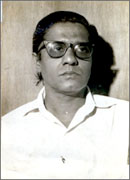 |
 |
 |
| Benadict
Dodampegama |
Reggie Siriwardene
|
Gamini
Haththotuwegama |
Lack of journalists and critics who are dedicated to this area and
the absence of regular criticism, especially, in Sinhala newspapers on
drama and theatre, have adversely affected the declining audience as
well as the artists and dramatists.
Sinhalese newspapers carry, intermittent reviews, especially, on
drama unfortunately if the drama happened to be of a friend of the
critic.
It is pathetic that criticism on cinema and drama has increasingly
becoming partisan and a section of critics refrain from making any
comment on a piece of art on the irrational basis that they are not in
conformity with their parochial and obsolete views. Critics unable to
understand and appreciate works of art have on some occasion, gone to
the extent of denouncing the creator as a mad and mentally ill.
Principal different between the contemporary critics and their
criticism and those made in 1960's was that those critics, though they
might have their own political view, did objective analysis and were
knowledgeable of Sri Lankan and international development in the field
of fine arts.
Literary criticisms which would have been an educative process, has
unfortunately become avenues for expressing racial or parochial ideas
and personal view. Personal views have become criteria and tools in
analyzing a work of art. For instance, an anti-feminist, at the very out
set would reject a work of art with strong feminine character, purely on
the basis of his extreme views.
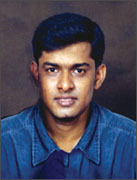 |
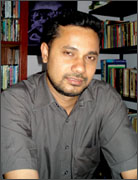 |
|
Suranga Seneviratne’s debut soup opera(Angani)-Shed light on novel
application of the medium |
Ranga
Bandaranayake-intellectual audience awaits serious work of Art such
as Sinhalese production of Crime and Punishment which has not yet
materalized |
However, in reality, one may not be able to condemn a work of art in
that manner as feminism sprang from social inequalities and
institutional discriminations in a society which are traditionally taken
for granted. So called critics should understand that a description of a
storyline or location description would not constitute either a critique
or a review. It would be a mere advertisement in the format of writing.
It should be stated here that with all the due respect to Rear
Admiral Sarath Weerasekara that his criticisms on cinema were haphazard
and often interchanging characters and scenes of different films.
His grasp of the subject and understanding of the medium is gravely
dubious and it is doubtful whether he had seen these films and
understood them correctly. It seems that his criticism spring from
extremist ideas and views rather than understanding the subtleties and
complexities of the serious works of art.
It is pity that a mushrooming generation of fake critics who make
their analysis at a superficial level, in the manner reminding us of
group of blinds trying to understand the shape of an elephant by
touching diverse parts of the animal's anatomy and identifying the
animal with a particular part each touch.
Newspapers also failed in their duty when they publish extreme view
sent by ill-informed or misguided persons as reviews. Newspapers should
not entertain delirious critiques by persons with extremist views or
cultural puritans who believed in a static and homogeneous culture.
The great critics such as Reggie Siriwardene was disgusted even to
speak on art and culture towards the end of their lives as the
environment was so unpleasant and hostile to serious work of art.
However, now the artists and dramatists do not like to talk about
arts and culture as they have been thoroughly disappointed with the
prevailing hostile environment for serious works of art. Serious
tradition of criticism has not been established with regard to the
medium of soap opera.
For instance some attempt by young generation of tele-drama producers
to make creations based on world literature, had been denounced as tele-plays
which would not appeal to the general public. Ranga Bandaranayake,
Athula Peiris and Suranga Seneviratne are some of the young producers
who made a genuine attempt to make artistic creations within the
confines of tele-drama.
On the other hand, the artists could not escape from the harsh
realities of a backward society they live in. In a heart rendering
documentary, Dr. Kamalika Abeyratne who contracted AIDS through blood
transfusion, commented on the harassment and inhuman treatment meted out
to them by the society at large, including the so-called professionals.
Dr. Kamalika Abeyratne and her husband Dr. Michael Abeyratne were
leading figures who had produced generations of medical officers and
consultants. Those so-called professional who harassed and insulted Dr.
Kamalika Abeyratne and Dr. Michael Abeyratne, would have been fit
citizens if they, at least, read Shakespeare's Comedy of Errors or Mid
Summer Night's Dreams.
It is no wonder that artists have been pacified by this environment
and what is needed is a process re-education which will bring about a
radical change of attitudes and obsolete ideas.
[email protected] |
